The Strangest Hair Trends Throughout History | From Fontanges to Mullets
Introduction: Hair as a Historical Statement
From the moment humans first looked at their reflections, hair has been more than just a biological feature; it's a canvas for self-expression, a symbol of status, and a reflection of the times. While today we might experiment with balayage or a sharp bob, history is filled with styles that push the boundaries of imagination and, frankly, gravity. This exploration into the strangest hair trends throughout history reveals a fascinating story of culture, innovation, and the timeless human desire to stand out. These aren't just quirky footnotes in fashion archives; they are bold statements from eras defined by their own unique aesthetics and social codes.
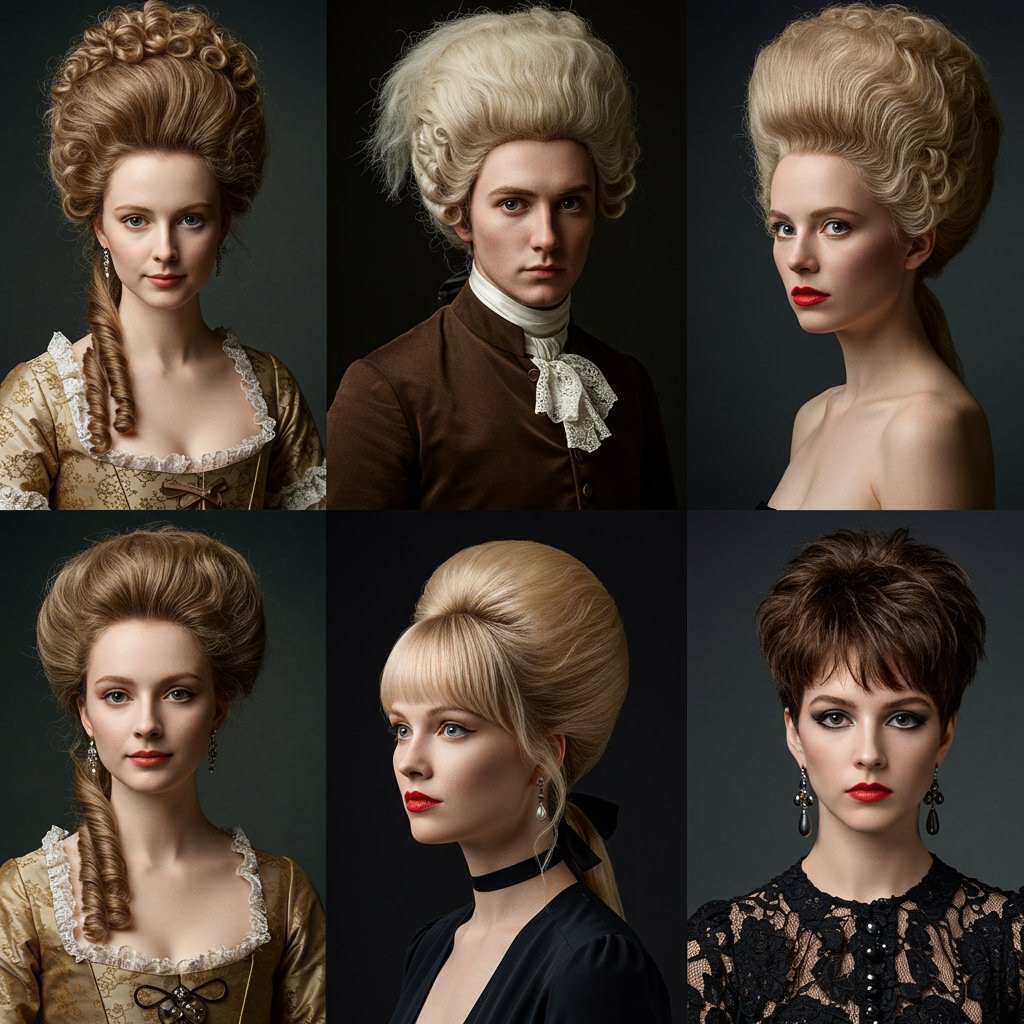
Throughout the centuries, what was considered the pinnacle of style could, by modern standards, seem utterly bizarre. We've seen hair powdered with flour, sculpted into architectural marvels, and even used to carry messages or mementos. Understanding these trends provides not only a glimpse into the past but also a deeper appreciation for the artistry and creativity inherent in hairstyling. Join us as we journey back in time to uncover some of the most bewildering, elaborate, and strangest hair trends that have ever graced the human head, proving that when it comes to hair, there have never been any limits.
---
The Towering Fontange: A Royal Accident in 17th-Century France
The late 17th century in the court of King Louis XIV was a hotbed of opulent fashion, and the Fontange hairstyle stands as one of its most towering achievements—literally. Legend has it that this trend began by accident. During a royal hunting trip, the Duchess of Fontanges, a mistress of the King, lost her hat and hastily tied her hair up with a garter to keep it out of her face. The King was so charmed by the playful, ribbon-adorned look that he asked her to wear it that way all the time. What began as a simple, ribbon-tied coiffure soon spiraled into an architectural feat of hair, lace, and wire.
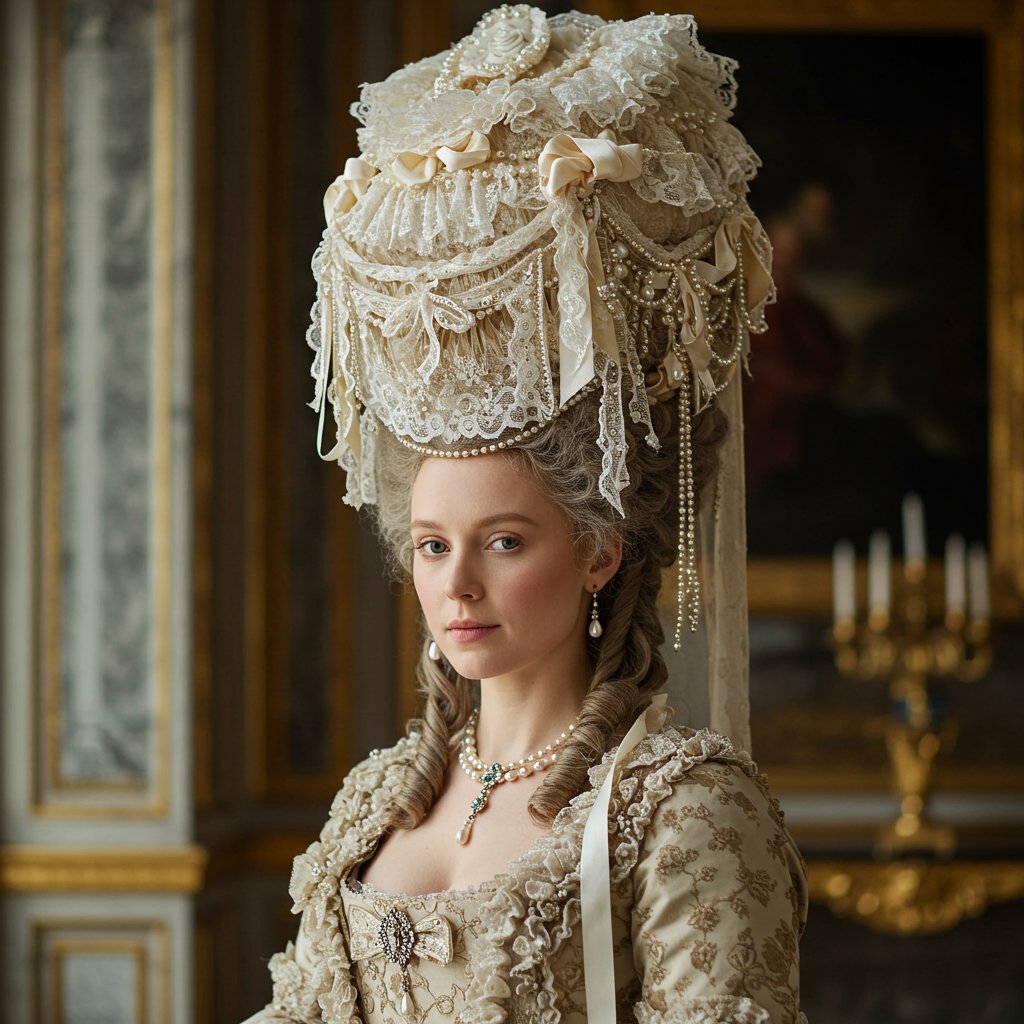
From Ribbon to Ridiculous
The Fontange evolved rapidly from a simple ribbon to a complex structure called a commode. This wire framework, covered in layers of starched linen, lace, and ribbons, was placed on the front of the head, with the natural hair swept up to support and blend with it. At its peak, the Fontange could reach heights of two feet or more, becoming so tall and precarious that wearers had to stoop to get through doorways. These elaborate headdresses were a clear symbol of wealth and status; only those who didn't need to perform manual labor could afford the time and expense to maintain such a style.The Inevitable Decline
Like all extreme trends, the Fontange's reign came to an end. It became increasingly impractical and was even criticized by the clergy for its vanity. The final nail in the coffin came when King Louis XIV, in his later years, began to favor more modest and pious styles at court. He reportedly made a negative comment about the towering headdresses, and almost overnight, the trend vanished. The Fontange remains one of history's most compelling examples of how a single influential figure could dictate the rise and fall of one of the strangest hair trends ever conceived.---
The Macaroni Wig: 18th-Century English Extravagance
In the 1770s, a new kind of dandy emerged in London. These were young, wealthy men who had completed the Grand Tour of Europe and returned with a taste for continental fashion, food, and flair. They were dubbed "Macaronis" after the then-exotic Italian pasta they favored. Their fashion sense was flamboyant and exaggerated, but nothing was more distinctive than their hairstyles. The Macaroni wig was a caricature of aristocratic French styles, taken to an almost comical extreme. It was a direct rebellion against the perceived stuffiness of traditional English masculinity.
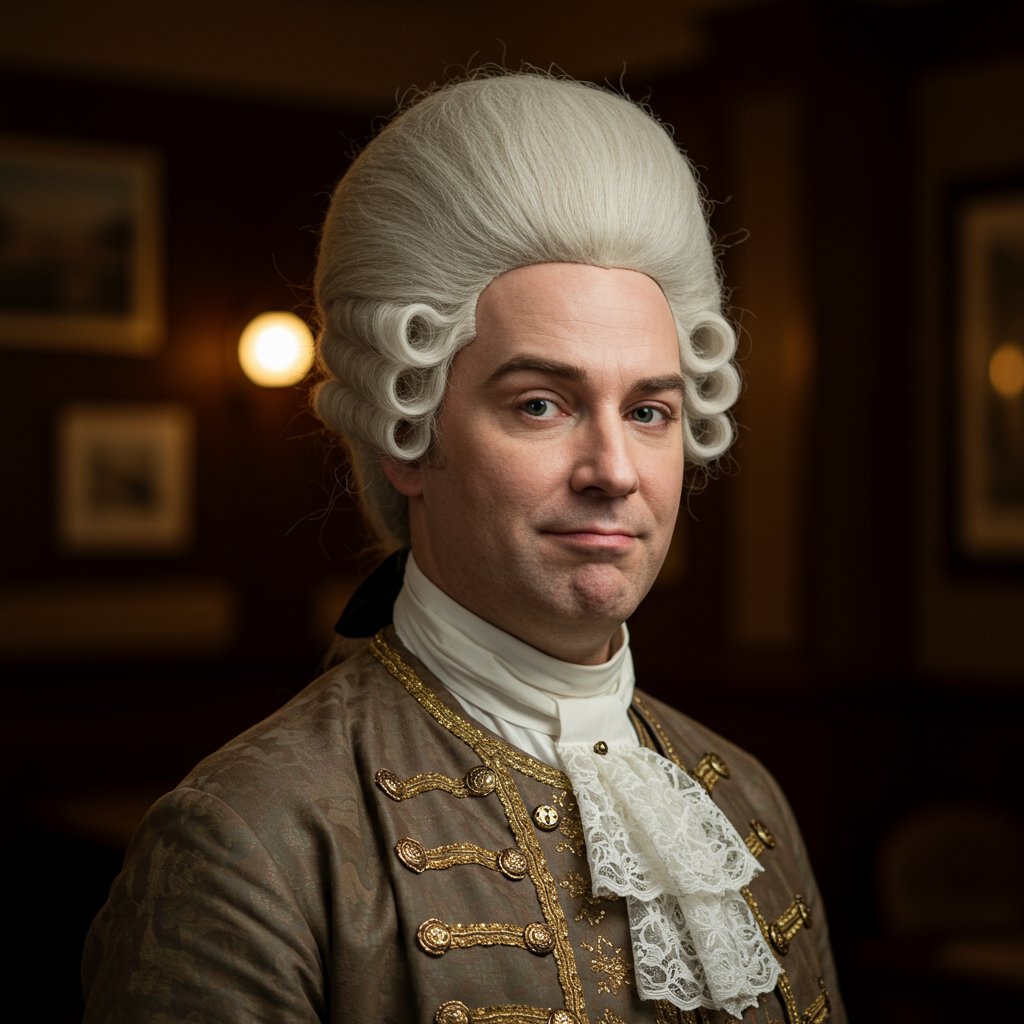
A Mountain of Powdered Hair
The signature Macaroni look featured an enormous wig, powdered to a stark white or grey, and built up to an incredible height over a wire or horsehair frame. The wig was often dressed with a tiny tricorn hat perched precariously on top, as if an afterthought. The sides were styled into voluminous curls or "buckles," and a long, thick queue (pigtail) tied with a large black silk bow hung down the back. The sheer size of these wigs made them difficult to wear and maintain. They were heavy, hot, and required daily powdering with scented, starch-based powder, which often attracted vermin.Symbol of a Subculture
The Macaroni style was more than just a fashion statement; it was a form of social commentary. It was mocked mercilessly in popular satirical prints of the day, which depicted Macaronis as effeminate and absurd. The song "Yankee Doodle," with its line "stuck a feather in his cap and called it macaroni," is a direct reference to this trend, mocking the idea that a simple American colonist could ever hope to achieve such a high level of foppish European style. The Macaroni's reign was short-lived, but it remains a potent symbol of youthful rebellion and one of history's strangest hair trends for men.---
Victorian Hair Jewelry: Sentimental and Somber Mementos
The Victorian era (1837-1901) was a period marked by deep sentimentality, elaborate mourning rituals, and a unique fascination with the tangible connection between life and death. This cultural climate gave rise to one of the most personal and, to modern eyes, strangest hair trends: hair jewelry. This wasn't about accessorizing hair, but rather using human hair itself as the primary material for creating intricate pieces of jewelry. Locks of hair from loved ones—both living and deceased—were woven, braided, and encased to create brooches, rings, necklaces, and watch fobs.

The Art of Hair Work
Creating hair jewelry was a highly skilled craft known as "hair work." There were two main techniques. The first involved palette work, where hair was ground into a powder, mixed with a binding agent, and painted into delicate scenes, often of weeping willows and tombstones for mourning jewelry. The second, more complex method was table work, where strands of hair were meticulously woven on a specialized table to create hollow, open-work patterns that resembled intricate lace or basketry. These woven hair tubes could then be shaped and fitted with gold or silver findings to create beautiful, durable pieces.A Token of Love and Loss
Hair jewelry was the ultimate personal token. Because hair does not decay, it was seen as an everlasting remnant of a person. A lock of a child's hair might be encased in a locket, or the hair of an entire family could be woven together into a single, elaborate wreath displayed under glass. During the long and public mourning of Prince Albert by Queen Victoria, the practice became even more widespread. While the idea of wearing a deceased relative's hair might seem macabre today, for the Victorians, it was a profound and beautiful way to keep their loved ones close, making it one of history's most emotionally charged hair trends.---
The Beehive: Reaching for the Sky in the 1960s
The 1960s were a decade of social change and stylistic revolution, and the Beehive hairstyle perfectly captured the era's bold, optimistic spirit. Created in 1960 by Chicago stylist Margaret Vinci Heldt, the Beehive was designed to be something new, tall, and elegant. It was an instant sensation, adopted by everyone from Hollywood starlets and First Ladies to teenage girls attending their proms. The style was a marvel of structural engineering, requiring a rigorous process of teasing (or "backcombing"), shaping, and an arsenal of hairspray to hold it in place.
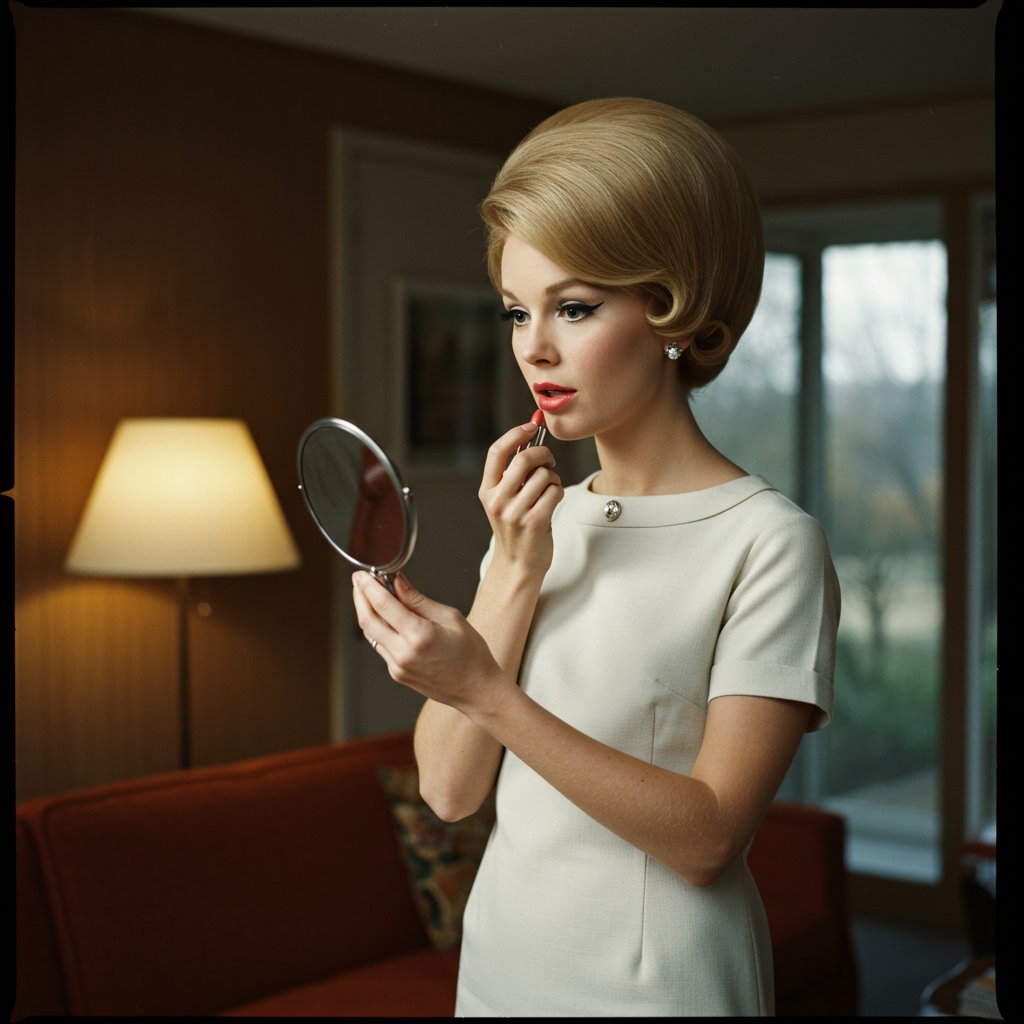
Constructing the Iconic Shape
Achieving the perfect Beehive was no small task. The process began with sectioning the hair, leaving the top layers smooth. The hair underneath was then relentlessly teased from root to tip to create a massive, tangled cushion of volume. This teased "rat's nest" was then carefully smoothed over with the top layers of hair, sculpted into the iconic conical or dome shape, and pinned securely. The final, crucial step was a liberal dousing of extra-strong hold hairspray, which created a hard, helmet-like shell. Women often wrapped their Beehives in scarves at night to preserve the style for several days, performing minor touch-ups each morning.Cultural Symbolism and Legacy
The Beehive was more than just a hairstyle; it was a symbol of polished, aspirational femininity. It projected an image of being perfectly "put-together." Its height added elegance and stature, and its flawless, immovable surface spoke to a desire for order and control in a rapidly changing world. Icons like Audrey Hepburn in Breakfast at Tiffany's and the musical group The Ronettes immortalized the look. While its popularity waned with the rise of the more natural, free-flowing hairstyles of the late '60s and '70s, the Beehive remains one of the most recognizable and strangest hair trends of the 20th century, a testament to the power of hairspray and ambition.---
The Mullet: Business in the Front, Party in the Back
Few hairstyles have inspired as much debate, ridicule, and nostalgic affection as the Mullet. Defined by its iconic "business in the front, party in the back" silhouette, the style features hair cut short on the top and sides, and left long in the back. While variations of this cut have existed for centuries (ancient Greek texts describe warriors with a similar style), the Mullet as we know it exploded into popular culture in the 1980s and became a defining look of the era, worn by rock stars, athletes, and everyday people alike.

An Equal-Opportunity Hairstyle
One of the most remarkable things about the Mullet was its versatility and widespread appeal across different subcultures. It was rocked by David Bowie as Ziggy Stardust, country singer Billy Ray Cyrus, hockey player Jaromir Jagr, and countless actors in action movies. It transcended gender, with women also adopting variations of the look. The Mullet could be permed, spiked, or feathered, adapting to punk, glam rock, and mainstream aesthetics. This adaptability is partly why it became so ubiquitous and, in the eyes of many, one of the strangest hair trends to achieve such global popularity.The Modern Resurgence
After being widely declared a fashion faux pas in the late 1990s and 2000s, the Mullet has made a surprising and powerful comeback in recent years. Modern interpretations, often called the "wolf cut" or "shag," play with the same short-to-long dynamic but with softer textures and more sophisticated layering. Stars like Miley Cyrus and Zendaya have sported modern mullets, reintroducing the style to a new generation. This revival proves that even the most maligned and strangest hair trends can find new life, challenging our preconceived notions of what constitutes "good" or "bad" style.---
The Hime Cut: Aristocratic Elegance of Heian Japan
Originating in the Imperial Court during Japan's Heian period (794 to 1185), the Hime Cut (or 'princess cut') is a highly stylized look with a rich history. This distinctive hairstyle consists of three key components: long, straight black hair, blunt, full bangs (or maegami) cut just above the eyes, and cheek-length sidelocks (or binsogi). This wasn't just a fashion choice; it was a symbol of beauty, status, and nobility for aristocratic women. The style was created during a coming-of-age ceremony for noblewomen, where the sidelocks were first cut.
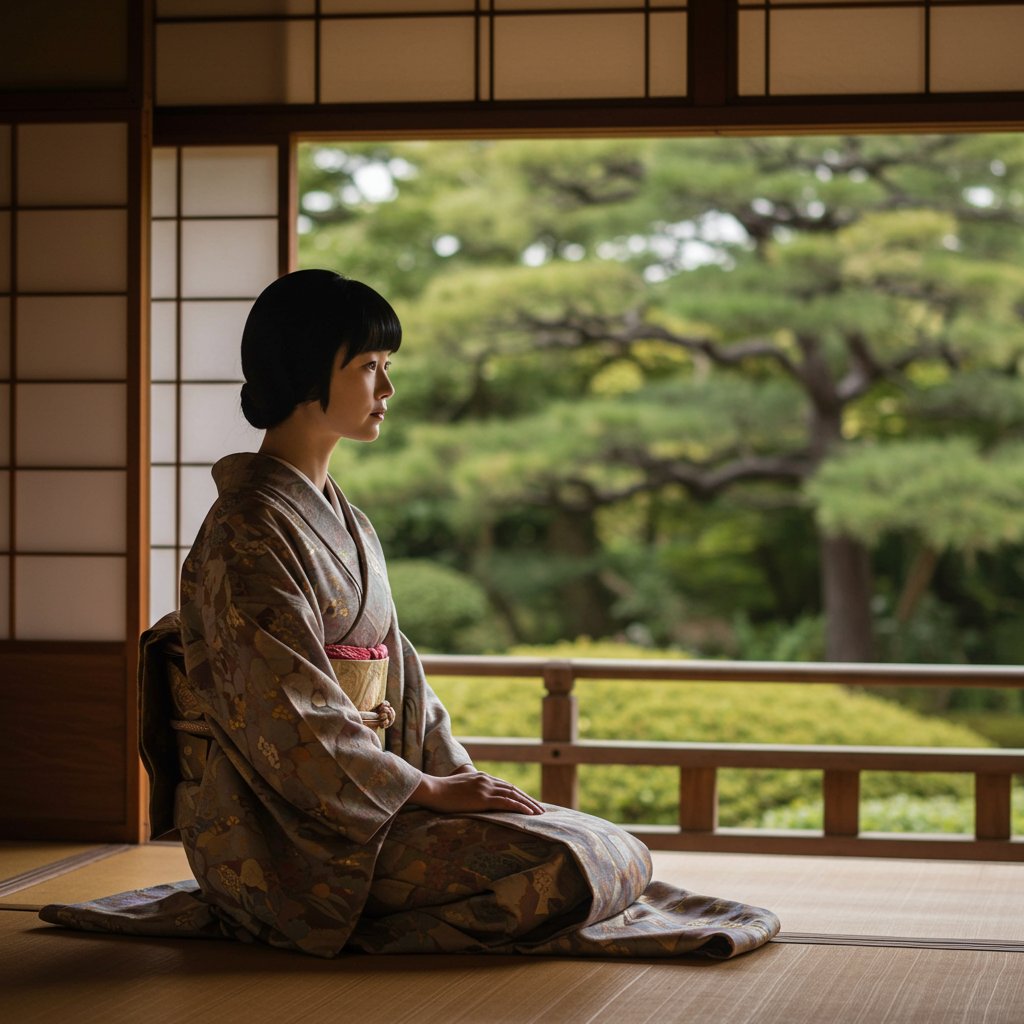
Symbolism and Maintenance
The Hime Cut was deeply intertwined with the beauty standards of the Heian era, which prized extremely long, straight, jet-black hair. The pristine, geometric lines of the bangs and sidelocks contrasted beautifully with the floor-length tresses, creating a look that was both structured and flowing. Maintaining such a style required immense care and was a testament to a life of leisure, as it was impractical for anyone engaged in physical labor. The straight, severe lines were considered a mark of refined elegance and composure.From Ancient Courts to Modern Pop Culture
While it originated over a thousand years ago, the Hime Cut has endured as a classic and sometimes avant-garde style. It has seen a resurgence in modern Japan and beyond, particularly within anime, manga, and J-pop culture, where it's often used to signify a character who is traditional, mysterious, or high-class. Its appearance on international runways and celebrities has introduced this ancient, strange hair trend to a global audience, proving that its unique and dramatic appeal is truly timeless. It stands as a beautiful example of a historical hairstyle that continues to inspire contemporary artists and stylists.---
Modern Interpretations: Drawing Inspiration from History
While we may not be resurrecting two-foot-tall Fontanges anytime soon, the most daring and strangest hair trends of the past continue to influence modern hairstyling in subtle and surprising ways. History is a rich source of inspiration for today's stylists and fashion-forward individuals. The key is not to replicate these historical looks exactly but to deconstruct their core elements—volume, texture, shape, and ornamentation—and reinterpret them for a contemporary audience. This is where the skill of a professional stylist becomes invaluable.
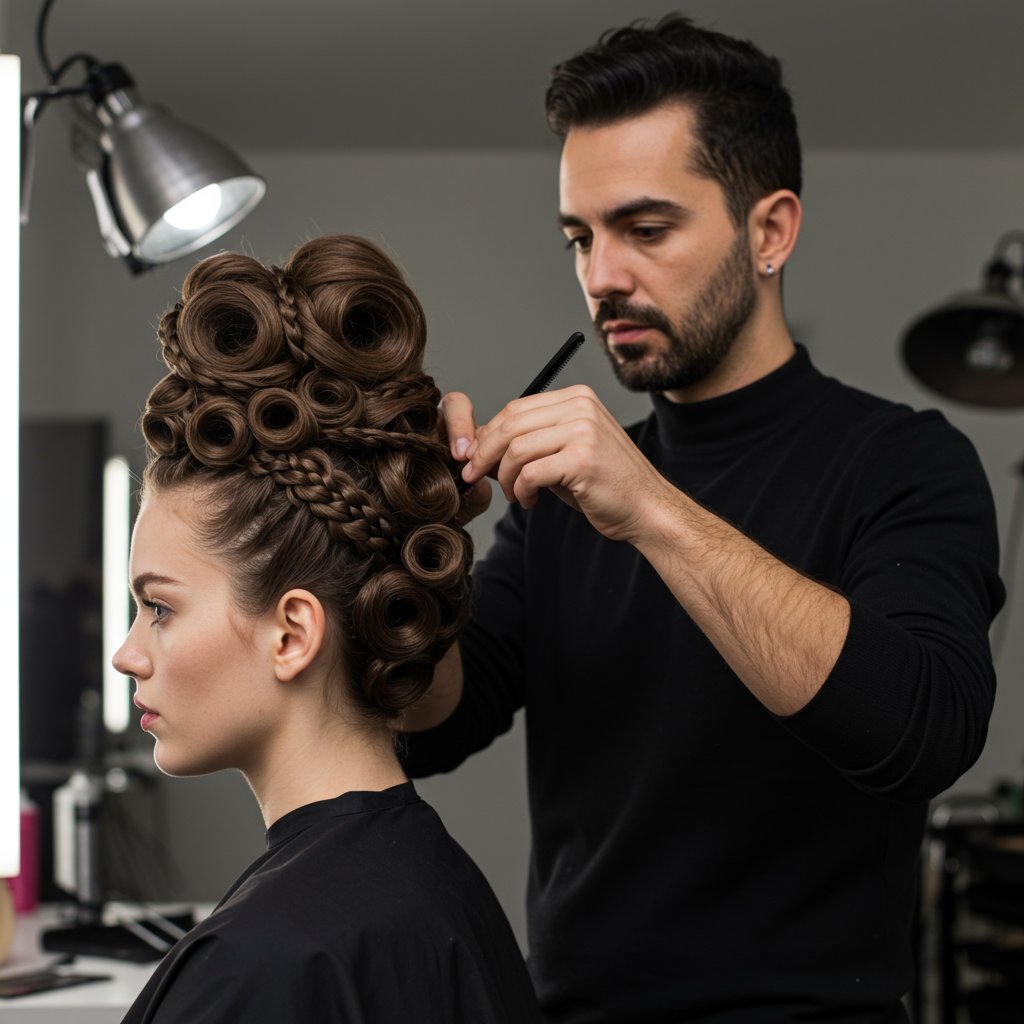
An experienced hairstylist can help you explore these historical concepts in a wearable, modern way. The towering height of the Macaroni wig can inspire a voluminous, textured updo for a special event. The intricate braids of Victorian hair jewelry can be translated into complex, woven braided styles that are artistic and beautiful. The sharp, geometric lines of the Hime Cut are echoed in today's precision bobs and blunt bangs. Even the mullet's core concept—a playful contrast between lengths—is alive and well in the popular wolf cuts and shags that dominate current trend reports.
By understanding the principles behind these historical styles, professional salons can offer clients unique, personalized looks that feel both fresh and rooted in a rich legacy of creativity. The next time you're looking for a bold new style, consider discussing historical inspirations with your stylist. You might be surprised to find that the perfect modern look has its roots in one of history's strangest and most wonderful hair trends. It's about taking the spirit of the past and making it entirely your own.
---
Frequently Asked Questions About Historical Hair Trends
1. How did people in the 18th century keep their enormous wigs clean?
They didn't, not in the modern sense. Wigs were rarely washed with water. Instead, they were regularly powdered with scented starch or flour to absorb oils, mask odors, and maintain their white color. They were also periodically de-loused by being sent to a wigmaker who would boil them and then re-set the style.2. Was the Beehive hairstyle damaging to the hair?
The short answer is yes. The intense backcombing, or teasing, required to create the volume was very rough on the hair cuticle, leading to breakage and split ends. The heavy use of hairspray also dried out the hair. Women often slept on their styles for days, which could lead to scalp issues if not properly cared for between stylings.3. Is it true that some historical hairstyles were a fire hazard?
Absolutely. The towering headdresses of the 17th and 18th centuries, particularly the Fontange, were made of flammable materials like linen and lace. When combined with the common use of candles for lighting, they posed a significant fire risk. Satirical prints from the era often depicted women's hair catching fire from chandeliers.4. What was the purpose of powdering hair and wigs?
Hair powdering, popular from the 16th to the late 18th century, served several purposes. It helped to degrease and freshen the hair between washes, it masked the smell of unwashed hair, it could help control lice, and it was a major status symbol. White and grey powders were the most fashionable, giving a look of distinguished maturity.5. Are any of these strange hair trends making a comeback?
Yes, in modified forms. The Mullet and its softer cousin, the Shag, are incredibly popular right now. The sharp lines of the Hime Cut are often seen in modern blunt bangs and bobs. While we aren't seeing literal Beehives, the desire for volume at the crown, achieved with modern, less-damaging techniques, is a direct descendant of that 1960s trend.6. Where did the hair for Victorian hair jewelry come from?
It came directly from the person being commemorated or from family members. People would save hair from haircuts throughout their lives. After a loved one passed away, their hair would be collected and sent to a professional hair worker or jeweler to be made into a memento. It was a very intimate and personal source material.---
Conclusion: The Enduring Legacy of Creative Hair
From the precarious heights of the French court to the rebellious spirit of the 1980s, the strangest hair trends throughout history offer more than just a humorous look at outdated fashion. They are a powerful reminder that hair has always been a vital tool for communication. These styles communicated wealth, marital status, political allegiance, and personal identity in ways that words could not. They pushed the boundaries of art, engineering, and social convention, proving that human creativity knows no bounds.
While our modern styling tools and products make achieving bold looks easier and safer than ever, the desire to express ourselves through our hair remains unchanged. The legacy of these historical trends lives on in the DNA of contemporary hairstyling, inspiring the volume, textures, and shapes we see on runways and on the street. Whether you're considering a subtle change or a dramatic transformation, remember that you're participating in a long and fascinating history of personal expression. To create your own piece of hair history, consult with an experienced stylist who can help you craft a look that is uniquely and beautifully you.


